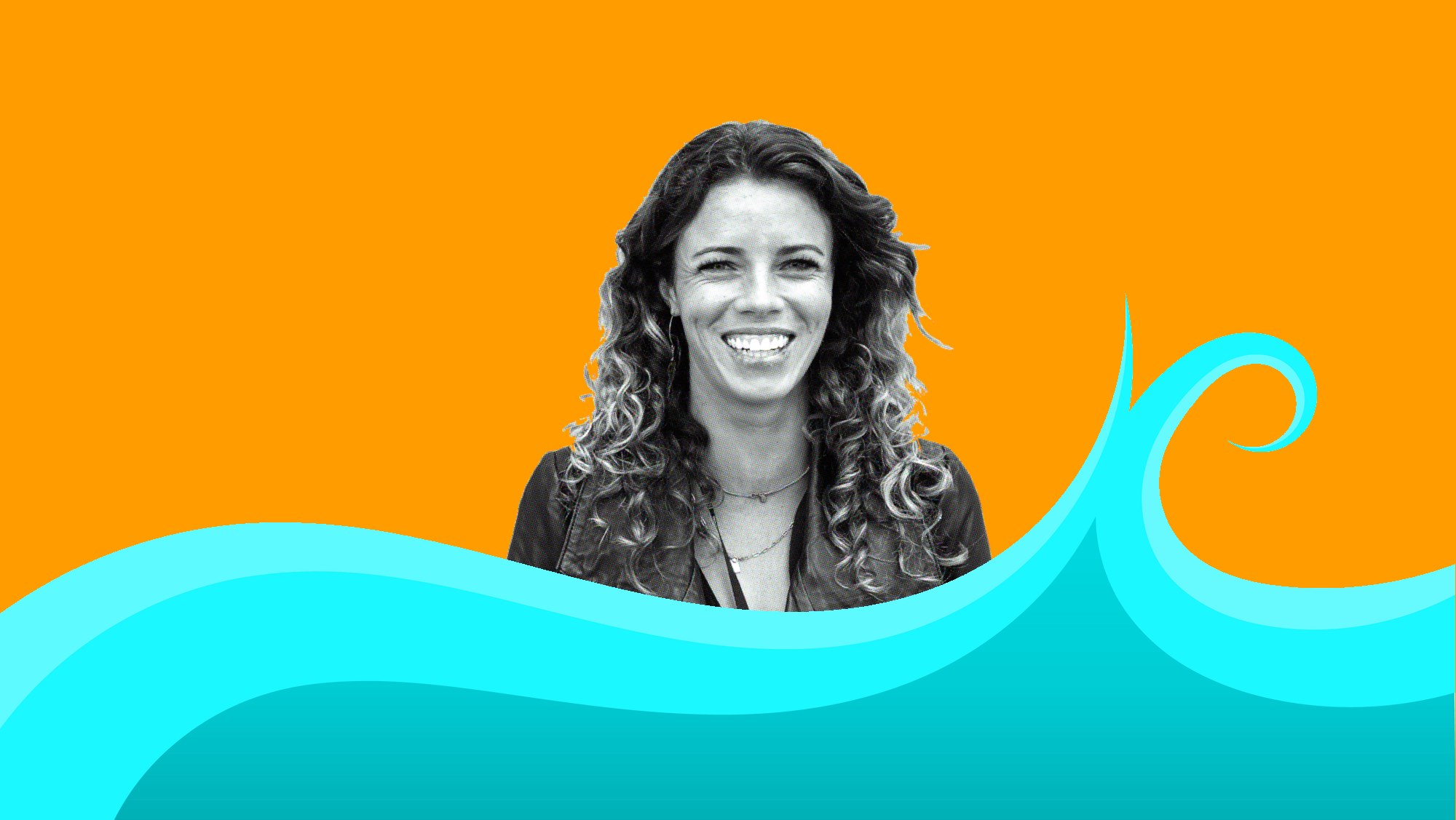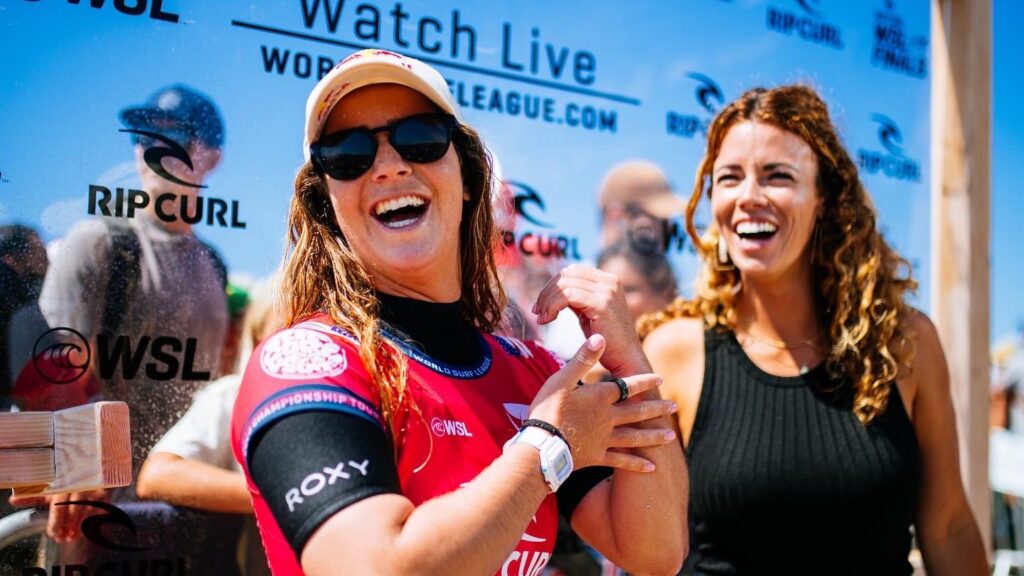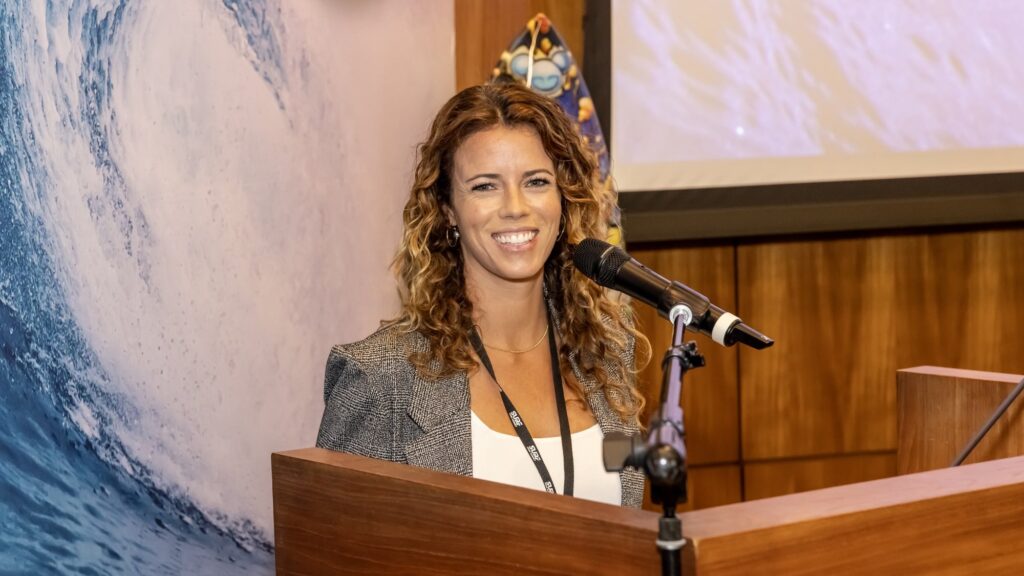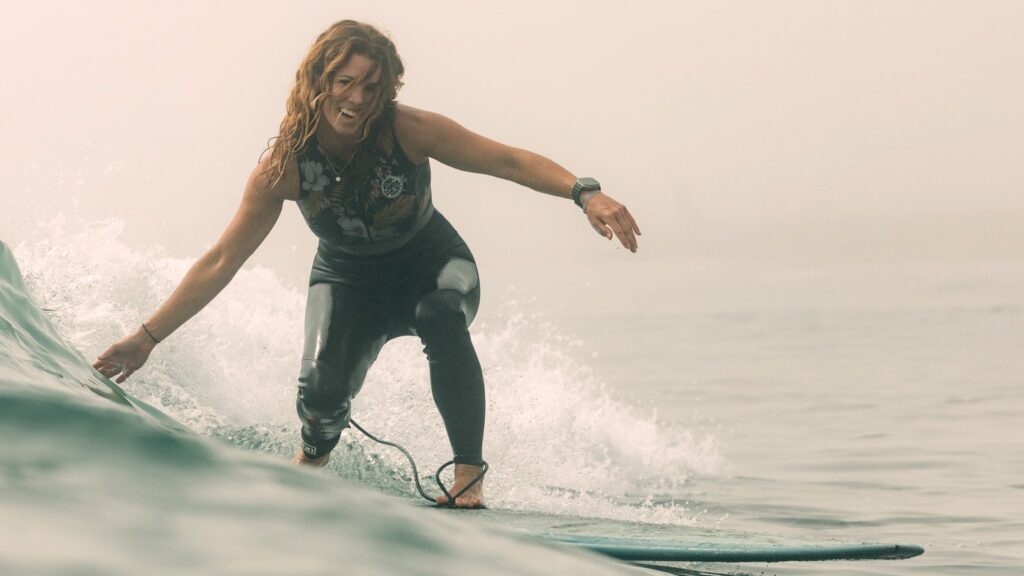The face of the WSL post-heat interview dives into the world of wave pools

AJ McCord is well recognized as the perceptive post-heat interviewer for WSL CT events. Growing up in San Diego, she took to surfing and later expanded her journalistic skills as a sports broadcaster on TV news. This combination of surf world experience and professional media training has enabled her to extract thoughtful commentary from top-tier surfers — sometimes a very challenging task — making the sport accessible to a broad, global audience.
At Surf Park Summit, the annual gathering of wave pool aficionados, innovators, engineers, and investors, AJ was in her element, connecting a range of people from divergent backgrounds. With a sixth social sense, she facilitated conversations and navigated the complexities of the event with ease. As the summit drew to a close, AJ had just wrapped up two full days of moderating — from fluid introductions to engaging interviews. Taking a brief pause, she shared insights with WavePoolMag about her experience as the emcee of a convention delving into the intricate interplay of surfing innovation and culture.

So most surfers know you for your WSL broadcasts.
I’ve freelanced with them for, I believe, seven of the Championship Tour stops and then a few on the Challenger Series as well. I grew up surfing in San Diego, so for me, coming back to surfing is really sweet. But I also do play-by-play for a professional pickleball league. We air on ESPN and CBS, and I do a lot of writing for different entities. I have this great series that comes out monthly called “Girls Who Rip,” which features badass women in the water for Sensi Swim, a bathing suit company created by Sensi Graves, who’s a professional kiteboarder. So, you name it, I probably do it, and if I haven’t done it, I’m more than open to trying it.
Coming from a pro sports background, what were your first impressions of Surf Park Summit?
Yeah, I thought it was really interesting. I’ve always loved surfing, and I’ve seen these surf parks popping up all over the world. I got a chance to commentate at the Surf Ranch Pro this year, so that was my first time seeing Kelly Slater’s wave in person. Seeing the best surfers in the world tear it up was awesome. It’s really cool because I was also an athlete—I was a gymnast. I love being coached in everything at all times. So for me, as someone who enjoys surfing but also really enjoys getting better, I was drawn to the surf park idea. It feels like a good way to consistently improve at surfing with video analysis and all that stuff. It was cool to see all the thought and innovation that these companies and great minds have put into making these products not just great for surfers, but also for their families and friends who are trying to get into the sport, and how they’re working to be sustainable and to include a more diverse population than we typically see in the ocean, because of proximity.

How does Surf Park Summit compare to a WSL event? Is it more nerdy, more techie?
I think it’s very different from a WSL event because this is a conference, not a competition. So you don’t have fans, right? There’s nobody cheering on me or the panelists in the audience other than their peers. But I found it to be really welcoming. Like I said, I came into this without a lot of experience in the surf park world, so everyone’s been kind and welcoming. Seeing the collaboration has been really cool because all these projects are around the world, and they could be really disjointed. Historically, it sounds like they have been, with not a lot of communication between each other. But in a place like this, everybody lets down their walls and is willing to collaborate and have conversations to figure out how to do this well around the world. So it seemed like a really open-minded place.
What was the most difficult part of this job?
The most difficult part of this job? I think making sure people came back on time was probably the hardest part because, you know, sometimes you feel a bit like a schoolteacher trying to get the kids to pay attention when they don’t.

Okay, cool. And what was the best part about this gig?
I think the best part was just getting to know more people who are really passionate about surfing in all its forms and spreading that to people around the world. For me, surfing has meant so much. The ocean is where I feel most myself. It’s where I have the most clarity about life in general, and it’s where I figure out if almost any problem or emotion can be processed or solved. Almost any emotion or problem can be solved or processed through some body of water for me. Finding people who are passionate about bringing that to communities that otherwise would never get a chance—right in the middle of the country or in landlocked states or countries—was really inspiring. I believe in the healing power of water, and I believe that the more we can introduce people to it—as hippie as it sounds—the more we can convince them to work hard to save it and to protect our planet, and to understand the ways we’re all connected. You may be surfing a wave in Munich, Germany, while I’m surfing one in La Jolla, California, but we’re both riding the same thing. We’re both feeling those same emotions that are only found in water.
Related Coverage
